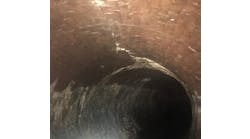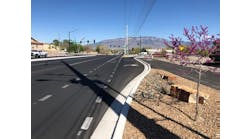Historically, the processing of wastewater was focused on
simply collecting sewage and pumping it to the local wastewater treatment plant
for processing. Under normal, dry weather conditions, sewage flow would flow
directly into the wastewater treatment plant. There were no provisions for
handling stormwater--it was allowed to discharge freely into waterways.
Eventually, the U.S. Environmental Protection Agency (EPA)
restricted the free flow of stormwater and required the first 10% of rainwater
be captured and treated. This resulted in the installation of larger pipelines
where sewage was combined with stormwater and piped to the wastewater treatment
plant for processing.
Combined sewer systems were sized to handle all of the
normal sewage flow through the line and the first 10% of rainfall. At the time,
experts believed that if the treatment plant could handle the normal sewage
load and the first 10% of rainfall, there would be little or no impact on the
environment. The rationale was if all of the excess flow was relatively clean
or very diluted, it could simply overflow into the receiving waterway.
Since then, engineers have learned that overflow events
cause beach closings, river contamination, damage to the environment, sickness
and in severe cases, death.
Today, there is legislation to eliminate combined sewer
overflows. Heavy fines are levied by the EPA against communities that violate
this law. The EPA has been reasonable with enforcement because the costs
associated with eliminating combined sewer overflows are great--not to
mention that it will take time to expand the infrastructure.
However, as municipalities and utilities have learned,
eliminating overflow events is a must.
Ways and means
There are a number of ways to eliminate combined sewer
overflow events. These include building a new wastewater treatment plant,
expanding an existing plant, building a deep tunnel to capture stormwater,
building flow equalization or retention basins to handle peak flows, better
utilizing the storage capacity of the existing collection system.
A large Midwest city (per a request to WWD, the city wished
to remain anonymous) reviewed these options and decided to use the capacity of
its collection and interceptor system for stormwater storage and to regulate or
divert flow to minimize or eliminate overflow events.
Calling on the design skills of the Triad Engineering Corp.,
a control strategy was identified that would minimize combined sewer overflow volume
and frequency through the optimization of the collection and treatment system.
To accomplish these goals, Triad designed a system that used
three Type A Megaflex pinch valves manufactured by the Red Valve Co., to
regulate and/or divert flow to portions of the pipeline network that have
storage capacity. The design called for two 72-in. and one 66-in. Megaflex
pinch valve.
Monitoring devices located throughout the network of
collection pipelines send flow data via telemetry to a central control station.
In turn, a control signal is sent to one of the Megaflex valves to partially
close the valve in order to regulate or divert the flow into portions of the
collection system with greater storage capacity.
The cost-effective Type A Megaflex was selected for the
city’s system because the full line size valves are like a straight piece
of pipe when open and the partial closing capability of these valves provided
the ability to isolate or control the flow.


